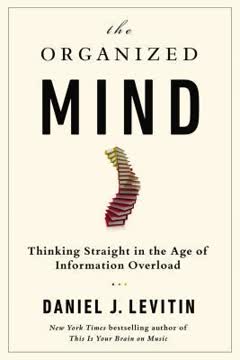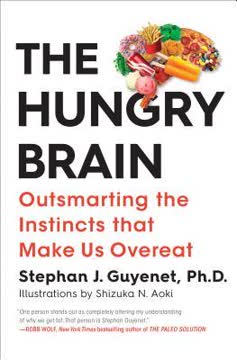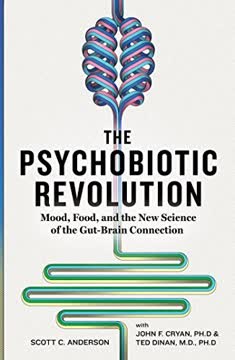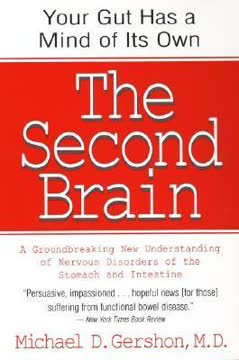Key Takeaways
1. The enteric nervous system: A second brain in the gut
We now know that there is a brain in the bowel, however inappropriate that concept might seem to be.
A complex neural network. The enteric nervous system (ENS) is a vast network of neurons embedded in the walls of the gastrointestinal tract. It contains over 100 million nerve cells, more than in the spinal cord, and can function independently of the central nervous system. This "second brain" controls various aspects of digestion, including:
- Motility (movement of food through the digestive tract)
- Secretion of digestive enzymes and mucus
- Blood flow to the intestines
- Immune responses in the gut
The ENS is organized into two main plexuses:
- Myenteric plexus: Located between the longitudinal and circular muscle layers, primarily controlling motility
- Submucosal plexus: Found in the submucosa, regulating secretion and local blood flow
2. Neurotransmitters and receptors: The chemical language of the gut
Nature was playing a game with us. It was, as it so often is, being coy.
Complex chemical communication. The ENS uses a wide array of neurotransmitters and receptors to communicate and regulate gut function. This chemical language is remarkably diverse and sophisticated, rivaling that of the brain. Key players include:
- Acetylcholine: The primary excitatory neurotransmitter in the ENS
- Serotonin: A crucial signaling molecule with multiple roles
- Substance P: Involved in pain sensation and inflammation
- Vasoactive Intestinal Peptide (VIP): Regulates secretion and blood flow
The complexity of this system is exemplified by serotonin, which has at least seven different receptor subtypes in the gut, each with unique functions. This diversity allows for nuanced control of various gut processes and provides multiple targets for therapeutic interventions.
3. The peristaltic reflex: Coordinated intestinal movement
The "law of the intestine" that Bayliss and Starling formulated still describes the behavior of the bowel, but the name of the activity has changed.
Orchestrated gut motility. The peristaltic reflex is a coordinated series of muscle contractions and relaxations that propel food through the digestive tract. This reflex is controlled by the ENS and can occur independently of input from the brain or spinal cord. The process involves:
- Distension of the intestinal wall by food
- Activation of sensory neurons in the gut lining
- Stimulation of interneurons in the ENS
- Activation of motor neurons, causing:
- Contraction of muscles behind the food bolus
- Relaxation of muscles ahead of the bolus
This carefully orchestrated sequence ensures efficient movement of food and waste through the digestive system, highlighting the sophisticated control exerted by the second brain.
4. Serotonin's crucial role in gut function and signaling
Serotonin hooked me and set me on a course that was soon to upset many of my scientific elders.
Multifaceted signaling molecule. Serotonin plays a pivotal role in gut function, acting as both a neurotransmitter and a signaling molecule. Its importance is underscored by the fact that 95% of the body's serotonin is produced in the gut. Key functions of serotonin in the gut include:
- Initiating peristaltic and secretory reflexes
- Modulating sensory information sent to the brain
- Regulating intestinal inflammation and immune responses
Serotonin's actions are mediated through multiple receptor subtypes, including:
- 5-HT1P: Involved in slow excitatory neurotransmission
- 5-HT3: Important for fast excitatory responses and signaling to the brain
- 5-HT4: Enhances the release of acetylcholine from enteric neurons
Understanding serotonin's complex roles has led to the development of new therapeutic approaches for gastrointestinal disorders.
5. The gut-brain connection: Bidirectional communication
We are indeed hollow men and, although Eliot did not say it (he was a sexist pig), also hollow women.
Two-way street. The gut and brain communicate bidirectionally through various pathways, including the vagus nerve, immune system, and endocrine system. This gut-brain axis influences numerous aspects of health and behavior:
- Emotional states: Gut disturbances can affect mood and vice versa
- Stress responses: The gut is highly sensitive to stress and can amplify stress signals
- Appetite regulation: Signals from the gut influence eating behavior
- Immune function: The gut microbiome plays a crucial role in immune system development
Recent research has revealed that many psychiatric and neurological disorders, such as depression and Parkinson's disease, have gastrointestinal components. This highlights the importance of considering the gut-brain connection in understanding and treating various health conditions.
6. Functional bowel disorders: When the second brain malfunctions
At any given time, about 20 percent of the American population is partially disabled, or at least made miserable, by a condition known as functional bowel disease.
Enigmatic conditions. Functional bowel disorders, such as irritable bowel syndrome (IBS), are common yet poorly understood conditions characterized by chronic gastrointestinal symptoms without identifiable structural or biochemical abnormalities. These disorders likely result from dysfunction in the enteric nervous system and its communication with the central nervous system. Key features include:
- Altered gut motility
- Visceral hypersensitivity
- Abnormal brain-gut interactions
- Potential involvement of the gut microbiome
The complexity of these disorders reflects the sophisticated nature of the second brain and the challenges in treating disturbances in its function. Research into the enteric nervous system has led to new insights and potential therapeutic approaches for these conditions.
7. Therapeutic approaches: Targeting the enteric nervous system
Since fixing the brain in the head has not worked, they are having a go at fixing the brain in the bowel.
Novel treatment strategies. Understanding the enteric nervous system has opened up new avenues for treating gastrointestinal disorders. These approaches target specific components of the ENS to modulate gut function. Examples include:
- 5-HT3 receptor antagonists: Used to treat chemotherapy-induced nausea and diarrhea-predominant IBS
- 5-HT4 receptor agonists: Enhance motility in constipation-predominant IBS
- Probiotics: Modulate the gut microbiome and influence ENS function
- Neuromodulation techniques: Direct electrical stimulation of the ENS or vagus nerve
Future therapies may target specific neurotransmitter systems or utilize the gut-brain axis to treat both gastrointestinal and neuropsychiatric disorders. The complexity of the ENS offers multiple potential targets for intervention, promising more precise and effective treatments.
8. The evolutionary perspective: Why we need a second brain
Evolution has played a trick. When our predecessors emerged from the primeval ooze and acquired a backbone, they also developed a brain in the head and a gut with a mind of its own.
Adaptive advantage. The development of a second brain in the gut conferred significant evolutionary advantages:
- Efficient digestion: The ENS can manage complex digestive processes without constant input from the brain
- Rapid responses: Local control allows for quick reactions to changes in the gut environment
- Energy conservation: The brain is freed from constantly monitoring digestive functions
- Enhanced survival: Better control of nutrient absorption and defense against pathogens
The sophistication of the ENS reflects the critical importance of digestive functions for survival. As animals became more complex, so did their enteric nervous systems, allowing for more efficient and adaptable digestive processes. This evolutionary perspective highlights the fundamental importance of the second brain in our overall physiology and health.
Last updated:
FAQ
What is "The Second Brain" by Michael D. Gershon about?
- Focus on the enteric nervous system: The book explores the discovery, structure, and function of the enteric nervous system (ENS), often called the "second brain," which operates independently within the gut.
- Scientific and historical journey: Gershon recounts the history of research on the ENS, including key discoveries and his own contributions, especially regarding serotonin as a neurotransmitter in the gut.
- Clinical implications: The book discusses how understanding the ENS can revolutionize the treatment of gastrointestinal disorders, particularly functional bowel diseases.
- Comprehensive structure: Divided into three parts, the book covers early breakthroughs, a detailed exploration of the gut, and the origins and disorders of the ENS.
Why should I read "The Second Brain" by Michael D. Gershon?
- Revolutionary perspective: The book challenges traditional views by revealing the gut’s nervous system as a complex, semi-autonomous "second brain" that influences health and disease.
- Bridging science and medicine: Gershon makes neurogastroenterology accessible, blending rigorous science with engaging storytelling and personal anecdotes.
- Hope for patients: The book offers optimism for millions suffering from gut-related illnesses, highlighting new therapies targeting the ENS.
- Changing medical attitudes: It advocates for greater understanding and compassion for patients with gastrointestinal disorders, moving beyond dismissive psychosomatic explanations.
What are the key takeaways from "The Second Brain" by Michael D. Gershon?
- Gut autonomy: The ENS is a vast network of neurons capable of independent reflexes and complex regulation of digestion, absorption, and immune defense.
- Serotonin’s central role: Serotonin is a major neurotransmitter in the gut, crucial for motility and sensation, and a target for new therapies.
- Clinical revolution: Understanding the ENS has led to better treatments for ulcers, IBS, and other gut disorders, shifting away from surgery and psychosomatic diagnoses.
- Developmental and genetic insights: Disorders like Hirschsprung’s disease are linked to developmental and genetic defects in ENS formation.
What are the best quotes from "The Second Brain" by Michael D. Gershon and what do they mean?
- "Descartes may have said, 'I think, therefore I am,' but he only said that because his gut let him." This underscores the foundational role of the gut in enabling higher brain functions.
- "The enteric nervous system is a rebel, the only element of the peripheral nervous system that can elect not to do the bidding of the brain or spinal cord." This highlights the ENS’s autonomy and complexity.
- "No one thinks straight when his mind is focused on the toilet." A humorous reminder of how gut dysfunction can dominate mental focus.
- "Understanding spells relief." Emphasizes the hope that scientific insight into the ENS will lead to effective treatments for gut diseases.
How does Michael D. Gershon define the enteric nervous system in "The Second Brain"?
- Vast neural network: The ENS consists of over 100 million nerve cells embedded in the gut wall, organized into two main plexuses: Auerbach’s (myenteric) and Meissner’s (submucosal).
- Functional independence: It can mediate reflexes and control digestion without input from the brain or spinal cord, making it a true "second brain."
- Evolutionary significance: The ENS is an ancient, evolutionarily conserved system, reflecting its critical role in survival.
- Complexity and diversity: It uses a wide array of neurotransmitters and receptors, rivaling the brain in complexity.
What is the significance of serotonin in the enteric nervous system according to "The Second Brain"?
- Key neurotransmitter: Gershon established serotonin as a major neurotransmitter in the gut, essential for initiating peristaltic and secretory reflexes.
- Multiple receptor types: The gut contains at least seven serotonin receptors, including 5-HT3 and 5-HT4, each mediating different responses.
- Therapeutic implications: Drugs targeting serotonin receptors, such as 5-HT3 antagonists, are used to treat conditions like IBS and chemotherapy-induced nausea.
- Dual role: Serotonin also acts as a growth factor influencing ENS development, not just as a neurotransmitter.
How does "The Second Brain" by Michael D. Gershon explain the relationship between the enteric nervous system and the autonomic nervous system?
- Three-division model: The ENS is one of three divisions of the autonomic nervous system, alongside the sympathetic and parasympathetic systems, but is anatomically and functionally independent.
- Local control: Most enteric neurons operate without direct input from the brain or spinal cord, processing sensory information and coordinating motor responses locally.
- Neurotransmitter diversity: The ENS uses a rich array of neurotransmitters, including acetylcholine and serotonin, reflecting its brain-like properties.
- Functional autonomy: The ENS can manage digestion and gut reflexes independently, but also communicates with the central nervous system.
What clinical implications does "The Second Brain" by Michael D. Gershon highlight regarding gastrointestinal disorders?
- Functional bowel diseases: Many common gut disorders, such as IBS, are linked to ENS dysfunction rather than structural abnormalities.
- Serotonin-targeted therapies: Drugs that modulate serotonin signaling can alleviate symptoms of motility disorders and IBS.
- Changing medical practice: Recognizing the ENS as a separate brain has shifted treatment approaches from surgery and psychosomatic explanations to targeted pharmacology.
- Compassion for patients: The book calls for greater empathy and understanding for those with gut disorders, moving beyond outdated stigmas.
How does "The Second Brain" by Michael D. Gershon describe the development and genetic basis of the enteric nervous system?
- Neural crest origin: The ENS develops from neural crest cells that migrate to the gut during embryogenesis.
- Gene regulation: Genes like RET, Mash-1, GDNF, and endothelin-3 orchestrate the proliferation, migration, and differentiation of enteric nerve precursors.
- Microenvironmental influence: The gut’s microenvironment instructs neural crest cells on their fate, affecting ENS formation.
- Disease connection: Defects in these developmental processes can lead to disorders like Hirschsprung’s disease.
What is Hirschsprung’s disease and how is it explained in "The Second Brain" by Michael D. Gershon?
- Congenital absence of ganglia: Hirschsprung’s disease is characterized by missing enteric ganglia in the terminal colon, causing bowel obstruction and megacolon.
- Genetic mutations: Mutations in genes such as RET, GDNF, and endothelin-3 disrupt neural crest cell migration or colonization.
- Role of colon environment: Abnormalities in the colon, like excessive laminin, can cause premature differentiation and migration failure of nerve precursors.
- Clinical impact: The disease highlights the importance of proper ENS development for normal gut function.
What are interstitial cells of Cajal (ICCs) and their significance in "The Second Brain" by Michael D. Gershon?
- Pacemaker cells: ICCs are specialized cells in the gut that act as pacemakers, coordinating smooth muscle contractions for motility.
- Signal transmission: They transmit and amplify signals from enteric nerves to smooth muscle, especially for inhibitory neurotransmission via nitric oxide.
- Discovery and identification: First described by Ramon y Cajal, ICCs are identified by molecular markers like Kit (c-kit).
- Clinical relevance: Defects in ICC networks are linked to motility disorders, making them a target for future therapies.
How does "The Second Brain" by Michael D. Gershon connect serotonin transporters and SSRIs to gut function and side effects?
- Serotonin transporter location: The serotonin transporter is found in intestinal lining cells, not in serotonin-producing EC cells, and regulates serotonin’s duration of action.
- SSRI effects: Drugs like Prozac block this transporter, prolonging serotonin action and leading to gastrointestinal side effects such as nausea, diarrhea, and constipation.
- Mechanistic insight: This explains why SSRIs, commonly used for depression, often cause gut-related side effects.
- Therapeutic potential: Targeting serotonin transporters and receptors in the gut could lead to better treatments for functional bowel disorders.
Review Summary
The Second Brain by Michael D. Gershon explores the enteric nervous system, revealing the gut's role as a "second brain." Readers appreciate Gershon's engaging writing style, humor, and scientific expertise. The book provides detailed explanations of gut function, neurobiology, and the author's research journey. While some find it informative and fascinating, others struggle with its technical complexity. Critics note the book's focus on Gershon's work and lack of practical applications. Overall, it's considered a valuable resource for those interested in gastrointestinal science, despite its dense scientific content.
Similar Books










Download PDF
Download EPUB
.epub digital book format is ideal for reading ebooks on phones, tablets, and e-readers.





